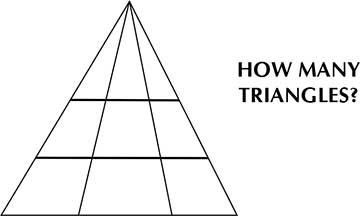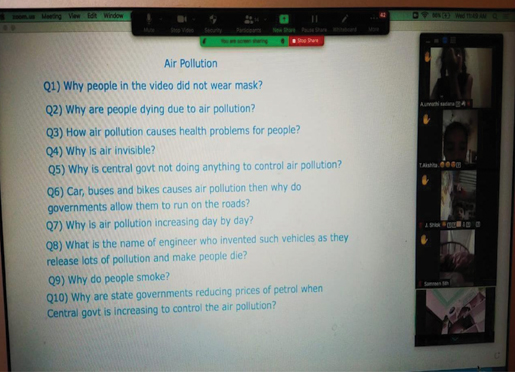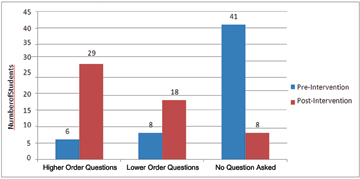Mohd. Amzad and Ajam Khan
Questioning is a major teaching and learning strategy for teachers as well as students. There are many studies which support a strong relationship between questioning skills, critical thinking, curiosity, and learning outcomes. In todays’ competitive world, questioning and debating skills have become essential to achieve success.
As an educator, have you ever wondered why students do not ask questions in your class? Or could you not come up with methods and strategies to promote curiosity-driven questions among students? Have you conducted a debate and observed that only a few students actively participate and ask quality questions, while the other students are quiet?
I taught 5th grade students in a government primary school, Kulsumpura Hyderabad, for two years. By using the observation method, I came to know that out of 55 students almost 75 per cent do not ask any questions and while the remaining 25 per cent ask questions, the quality of questions may not be up to the mark.
In order to promote curiosity-driven questions, I attempted to implement a few simple classroom questioning strategies and structured my lessons in such a way that they promoted curiosity and critical thinking among students. The encouraging findings of my intervention are discussed in this article.
Before starting, ask the class to think of questions about the topic.
In order to generate curiosity among students, I used to begin my class by showing a picture, which would be indirectly related to the topic. By looking at the picture, students would guess the topic they would be learning. Once they guessed the topic, I would give them three minutes to frame questions to which they would like answers by the end of the class.

The first picture shows that students will be learning about capacity and the second picture shows that they will be learning about weight.
Pose the problem and ask students to spell out the questions.
I asked the students to look at the problem given below and frame questions related to it.

The questions that they asked were: how to identify triangles? What are the qualities of triangles? Is it possible to have smaller triangles inside a big triangle? Can we make a square or rectangle inside a triangle? Do the length and width of a triangle need to be equal? Is it compulsory to draw straight lines to make triangles or can we make triangles with curved lines as well? Is it okay to count one line multiple times while counting triangles?
Wait time
During observation (pre-intervention), I found that very often children do not get time to think and frame questions. Therefore, we included wait time in lesson plans. After teaching or demonstrating how to solve a problem, students were given time to think and frame questions or raise concerns to clarify their doubts. This picture was used to motivate students to make use of wait time effectively and ask questions.

Providing a stimulus to students for framing quality questions.
(Air pollution was given as a stimulus)

Modelling how to frame questions.
Using the question words in a particular way, such as ‘What if, Why are, How would, I wonder’, etc. I included Q-Focus in assessments and asked students to come up with the questions. Marks were allotted on the basis of the depth and quality of the questions. A Q-Focus was, “Parents and teachers control our lives; we just have to accept that.” Some of the questions students came up with were, “Why do parent and teachers control our lives? Why do parents always keep telling us, don’t do this and don’t do that? Why do we always follow instructions given by parents and teachers? Can’t we think and make our own decisions? I like math but why do my parents and teachers force me to study environmental science?”
Final outcome
The final outcome was amazing. Through these strategies we could majorly impact the children’s curiosity levels. The table below shows clearly that higher level questioning of students increased from just six to 29 students. The number of students increased in the category of lower order questions as well. Asking even basic questions is better than sitting quiet in the classroom. There were huge changes that we found in the students who were not asking any question in the classroom. Pre-intervention, those numbers were 41 and after intervention, the number reduced to eight students.

Conclusion
There is need to structure lesson plans and classroom discourse in such a way that it should promote curiosity and critical thinking by developing questioning skills among students so that we can bring curiosity into mainstream education, making it a serious and practical consideration in how we set up our classrooms, how we choose to teach lessons, and what activities we seek to do.
Despite the fact that curiosity is the basis of our learning, the majority of our schools and curricula do not consider curiosity at all, focusing instead on rote memorization, subject-specific skills, standardized assessments which emphasize learning minimums, and disciplinary procedures that encourage silent knowledge consumption rather than inquisitiveness or interaction.
Such practices tend to emphasize outcomes over the learning process. Furthermore, they limit what children should or can learn and prevent any exploratory learning that fosters curiosity and leads to more sustained educational engagements. In this exercise, we came to the conclusion that good questioning skills can help students become more curious.
References
- Paul, R., & Elder, L, (2006). The thinker’s guide to the art of Socratic Questioning. USA: Sage Publications.
- Strother D (1989). Developing thinking skills through questioning. Phi Delta Kappan 71:324-327.
- Aslan C (2011). Questions Impact of Building Skills of Questioning Skills Development Oriented Teaching Practice of Teachers. Educ. Sci. 36(160).
The author has worked in the education sector for the past five years, leading cross-functional teams to produce meaningful curriculum for students. He can be reached at mohd.amzad2018@teachforindia.org.
